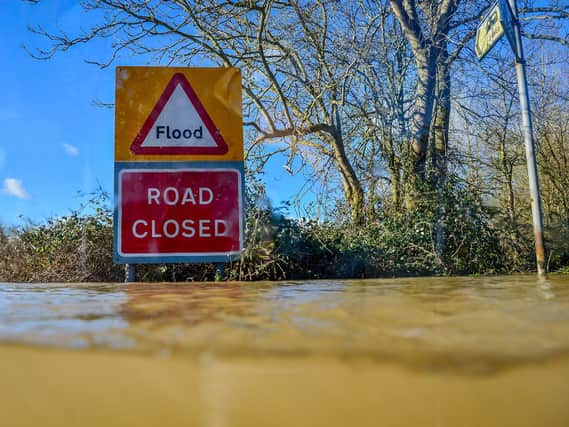Future flood measures will focus on resilience rather than protection, new strategy shows


The Commons Environment, Food and Rural Affairs Select Committee (EFRA) today heard from key figures from the Environment Agency, on the same day that a new blueprint for tackling flood risk was unveiled.
Emma Howard Boyd, Environment Agency chair, said there was a change in emphasis from protection to resilience in local areas as climate change had made it clear the formerly rare flooding events would become more common.
Advertisement
Hide AdAdvertisement
Hide AdShe said Yorkshire faced a “record-breaking wet autumn” last year and the country as a whole country faced the wettest February on record.
But she said: “Until now we have focused on trying to protect communities, and that is still vital, but as a nation we need to stop chasing the last flood event and should instead be making sure we are ready for the next one, and all the ones after that.”
More than 5.2m properties in England are already at risk of flooding, and climate change will lead to even more people being affected.
More extreme weather is expected, including summer temperatures up to 7.4˚C hotter and 59 per cent more rainfall by 2050.
Advertisement
Hide AdAdvertisement
Hide AdTherefore the new strategy focuses on resilience rather than what is traditionally seen as flood prevention such as building concrete defences.
John Curtin, the Environment Agency's executive director of flood and coastal risk management, pointed to Headquarters hairdressers in Mytholmroyd as an example of how resilience can make a difference.
He said: “The Calder Valley has been hit hard by quite a few floods but there’s a hairdressers in Mytholmroyd, it’s called Headquarters and it’s run by a lady called Sue.
“She was badly flooded - her hairdressers is right next to the river in Mytholmroyd - and she was badly flooded in 2016, and it took her nine months to get her business back on its feet.
Advertisement
Hide AdAdvertisement
Hide Ad“But what she did, which is absolutely central to what we’re saying today, when she was flooded in 2016 instead of just putting back as it was, she invested money to tanks the walls, pave the floor, lift the electrics, her kit can be bagged up really quickly when she gets one of the flood warnings.
“She was unfortunately flooded during Storm Dennis again this year but instead of nine months, she was up and running in a week.”
He also said the agency was moving away from using the type of language that would call flooding, for example, a “one in 500 year” event.
“The return period language tends to confuse people,” Mr Curtin said.
Advertisement
Hide AdAdvertisement
Hide Ad“So if they’ve had someone say ‘a one in 100 year flood’, they kind of think they’re then immune for another 99 years. That’s not the case.”
The measures announced by the Environment Agency today include expanded flood warnings by 2022 to all at risk properties, with 62,000 more families to be added to the service.
There will be an increased investment in natural flood management schemes to better protect communities, and more collaborative partnerships with national road, rail and utilities providers to ensure their investments are flood resilient.
And the strategy came on the same day that the Government announced details of the £5.2bn that will be spent on flood protection between 2021 and 2027, alongside a further £200m for innovative resilience measures in 25 areas, plus reforms to the FloodRe insurance programme.
Advertisement
Hide AdAdvertisement
Hide AdMs Boyd said: “Resilience means warning, informing, and being prepared to get back to normal quickly after floods, as well as creating traditional and natural flood protection schemes. Despite the risks posed by the climate emergency, communities don’t want to be cut off from the river or the sea by a concrete wall.
Environment Secretary George Eustice said: “We know that climate change is making the UK warmer and wetter, and we will be visited by extreme weather more frequently in the future.
“This ambitious strategy sets out how we can become more resilient to flooding and coastal erosion by continuing to build and maintain our flood defences while also increasing investment in nature-based solutions.
“It ensures ideas like reconnecting rivers with their natural floodplain or creating new areas where water can be stored and used in times of drought will become mainstream flood protection policies in the years to come.”